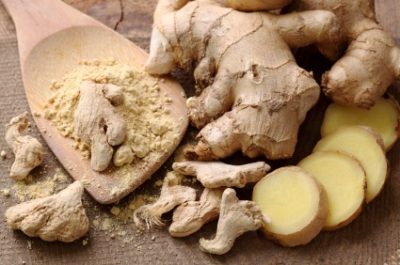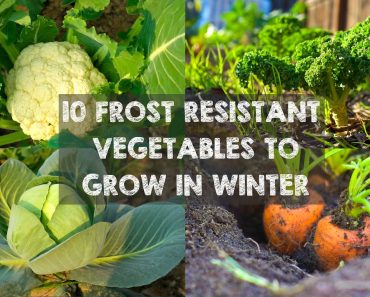
The smell that permeates the air in your home when you add fresh ginger to a meal is simply incredible. Ginger offers unique aromas and flavors that can transform dishes into something quite impressive. There is also numerous health benefits associated with consuming ginger, which makes it an all-around useful root to have in your home and of course to grow in your garden.
If you have ever picked up a few roots in the grocery store to cook with, then you know just how outrageously expensive ginger can actually be to purchase. The great news is that this versatile root is rather simple to grow once you get your plants established in a growing environment that will allow them to thrive.
The Basics Of Ginger
A ginger root comes from a plant named zingiber officinale, but it is typically just referred to as ginger or ginger root. There are numerous other plants in the same family group zingiberaceae, and they include cardamom and turmeric. Also, ginger is actually a rhizome and not a true root. Rhizomes are really less like roots and more like solid stems that send roots out from the nodes on them; rhizomes can actually be cut up into pieces and grow into entirely new plants, which makes propagation a breeze with ginger.
When the ginger plants grow, they are a lush green color that gives rise to clusters of buds that burst open into bright yellow flowers that are very attractive to bees and other beneficial insects. Ginger doesn’t just have great benefits as a medicinal plant and source of intense flavor; it has great aesthetic appeal simply because of how pretty the plant looks when growing healthy and in bloom.
Growing Ginger
Ginger prefers climates that are sub to full tropical, which means that while they may grow in many zones and differing climates, they may not tolerate winters well and will need to be offered a form of protection from the cold during the winter months. Many have reported that they’ve successfully cultivated ginger in their homes during the winter, by using a combination of growing lights and humidifiers.
Ginger Powder Is Loaded With Amazing Health Benefits
There are five growing conditions that ginger absolutely must have, and five growing conditions that will severely impact your ginger’s ability to grow and thrive.
Growing must-haves include the following:
1. Warm temperatures
2. Soil rich in organic material
3. High levels of humidity
4. Moist soil
5. Filtered sunlight
The five things that will impede the ginger’s growth include the following:
1. Frost
2. Waterlogged soil
3. Dried out soil
4. Strong, drying wind
5. Direct sunlight
If you do not live in an environment that will provide the right levels of moisture to the soil then you might have a little trouble at first. Luckily, ginger tends to be a very forgiving plant for you to experiment with, so long as the temperatures remain above 55 degrees Fahrenheit.
Ginger is best propagated by getting your hands on some fresh rhizomes from someone who grows ginger locally. An alternative is to purchase some from an organic website or to simply pick some up from an organic grocery store or farmer’s market. Ensure that the rhizomes you are bringing home are plump and have a fresh smell when you indent them with your fingernail. Also be sure that they aren’t withered or at all dried out.
When you get your ginger home, you should fill a small bowl up with cool water and soak them in some very, very mild dish soap. This is because even ginger sold as organic is often treated with a growth retardant, much like potatoes are, in order to prevent them from sprouting on the store shelves (which makes getting your rhizomes from someone locally a much better option if at all possible). The good news is that once your own plants are thriving, you can become a local source of fresh ginger for family, friends, and neighbors.
While some recommend that you leave the rhizomes soaking in fresh water until they sprout roots, experts agree that it is better to allow the plants to establish a healthy root system in the soil right away. This can avoid transplant shock, which can risk the overall health and well being of your ginger.
Ginger will grow really well in large containers or planted directly in the ground. Keep in mind that plants grown in containers need to have good drainage, so draining holes are essential in the containers. No matter which method you choose, you need to ensure that the soil conditions are ideally suited for the plant. A good mixture of compost in the soil will help to provide the nutrients the plant needs, and also help with moisture control.
The best time to plant is typically in the early part of spring, once you are sure that the last frost date has passed. Cut the rhizomes into pieces about the size of a quarter, ensuring that each piece still has a few growing buds on it. You can also plant the piece whole, but cutting it up will help you to get more plants and increase the likelihood of successful propagation.
Plant the pieces up to three inches deep, with the growing buds of the rhizomes facing upward. Cover them loosely with a good compost mix and ensure that the soil is kept nice and moist. Consider adding quality mulch on top of the soil in order to help with the moisture retention.
Keep the area free of weeds because ginger is a slow-growing plant that is not at all aggressive. Weeds can rapidly move in and start to leech nutrients away from the plant, which will impact your ability to grow healthy rhizomes for harvest.
While it can typically take up to ten months for the plant to start to wither, which is an indicator that the rhizomes are prime for harvesting, many gardeners give their ginger at least one growing season before they harvest from them. This can be frustrating, but it is often best to build healthy, stocky rhizomes from which to propagate other plants and ensure that you still have plenty left for cooking and medicinal purposes.
When ready to harvest, you can simply dig some of the rhizomes up, cut pieces off for use and then replant immediately. When you get the ginger indoors, you should scald it with boiling water, or wash it thoroughly and scrape the nodules off to prevent it from sprouting.
Multiple Uses For Ginger
The sheer versatility of ginger makes it worth growing, even if you are not entirely a fan of using it to season your food.
- Store the whole ginger roots in the freezer for up to six months and up to six weeks in the refrigerator.
- Use a food dehydrator to dry out pieces of the ginger. The dried pieces can then be stored in airtight containers as is, or they can be crushed and stored in airtight containers. Many people store the airtight containers in the freezer to further prolong the flavors and freshness of their ginger.
- Ginger tea has incredible benefits, especially when you are feeling under the weather. Steep ginger in boiling water and add a bit of honey for sweetness.
- Candied ginger has a very unique taste to it and is easily made by cooking slices of the ginger root in sugar until the roots have absorbed the sugar and are incredibly soft.
The hidden secrets of making herbal medicines…right at your fingertips!
Some other uses for ginger in the kitchen include the following easy-to-make goodies.
- Gingerbread
- Ginger ale
- Ginger wine
- Spice tea
- Curry
- Preserved in quality oil
There really is no wrong way to use and enjoy ginger.
Health Benefits Of Ginger
Research has found numerous potential health benefits for those who consume ginger on a regular basis. One of the most popular benefits that every woman who has been pregnant will tell you is that ginger can help to offset some of morning sickness symptoms that many women are plagued with. It is thought that ginger’s ability to help promote a healthy gastrointestinal system can help to ease the stomach upset that pregnancy brings along with it.
Studies have also found that ginger supplements can help to reduce the inflammation associated with the colon, and thus have a marked effect on the reduction of risks for colon cancer.
Ginger as also been seen to help reduce muscle pain associated with several illnesses and working out or bodybuilding. Just a few cups of ginger tea a week can help you to see a marked reduction in muscle inflammation.
Some other incredible properties of ginger that have been seen by researchers include a natural lowering of cholesterol and a thinning of the blood. While blood thinning is definitely not desirable if you are already on blood thinners like Warfarin, it can potentially help those at risk for heart disease.
Ginger has also been used for centuries to reduce the length and severity of colds and flu. Ginger steeped in boiling water with a bit of honey and lemon can be very soothing for someone who is ill. It has also been proven to be very useful in helping to ease severe menstrual cramping and migraines, due to the natural anti-inflammatory properties of ginger.
Whether you are interested in growing ginger to add some great zest to your culinary attempts, to use it for medicinal reasons, or because it is a very attractive plant to grow, there truly aren’t any reasons not to grow this versatile and fragrant plant.


























